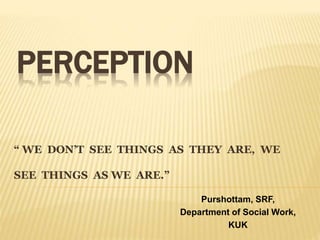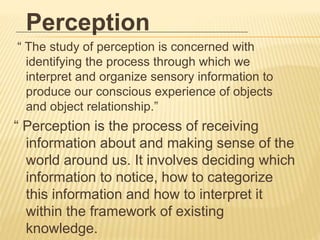Perception is the process by which individuals organize and interpret their sensory impressions to understand the world around them. It involves selecting relevant sensory information, categorizing it, and interpreting it based on prior knowledge. Perception is subjective and can differ from reality. Key aspects of perception discussed in the document include sensation versus perception, the perceptual process of selection, organization and interpretation, and Gestalt laws of perceptual organization.


































